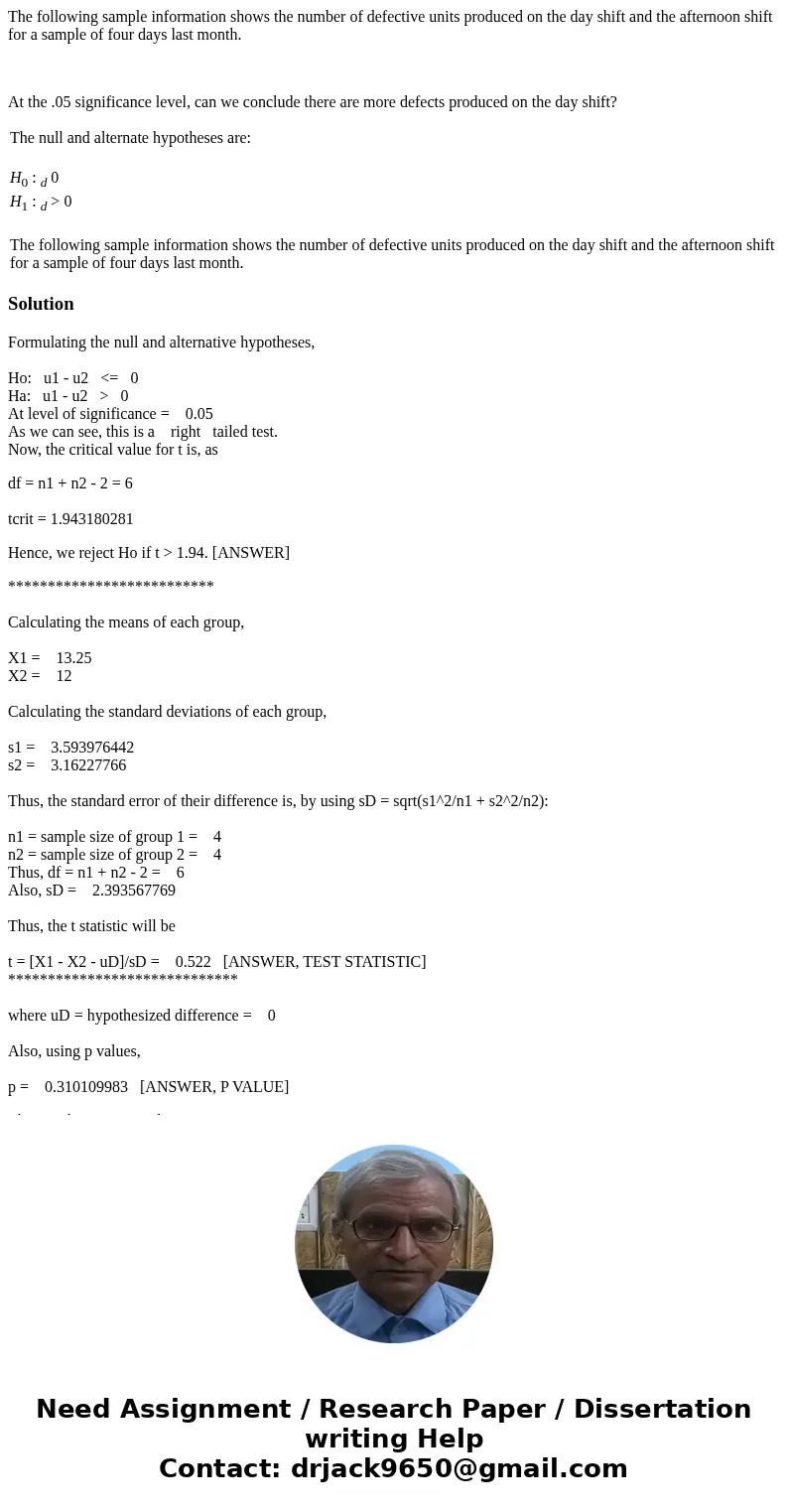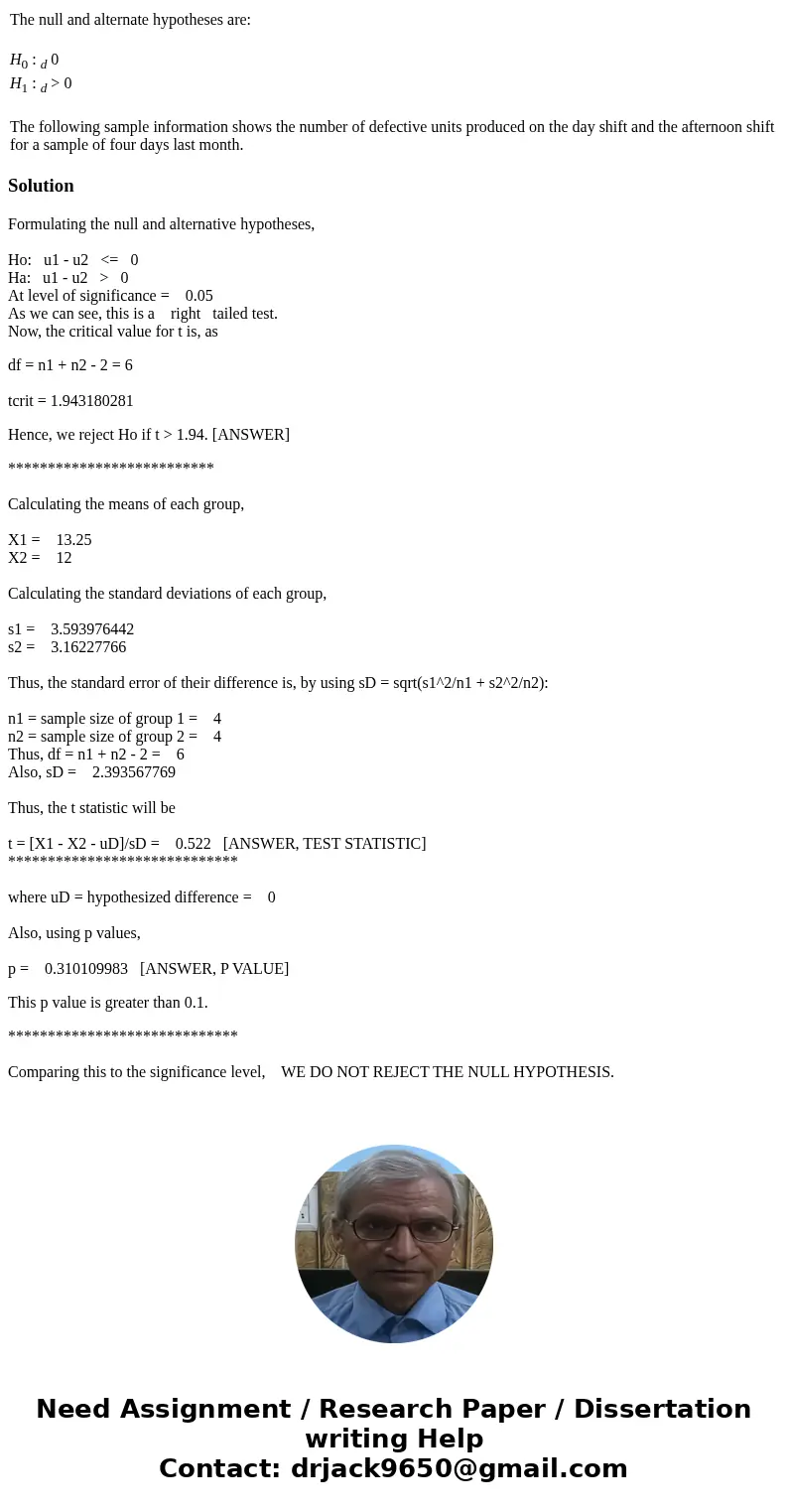The following sample information shows the number of defecti
The following sample information shows the number of defective units produced on the day shift and the afternoon shift for a sample of four days last month.
At the .05 significance level, can we conclude there are more defects produced on the day shift?
| The null and alternate hypotheses are: |
| H0 : d 0 |
| H1 : d > 0 |
| The following sample information shows the number of defective units produced on the day shift and the afternoon shift for a sample of four days last month. |
Solution
Formulating the null and alternative hypotheses,
Ho: u1 - u2 <= 0
Ha: u1 - u2 > 0
At level of significance = 0.05
As we can see, this is a right tailed test.
Now, the critical value for t is, as
df = n1 + n2 - 2 = 6
tcrit = 1.943180281
Hence, we reject Ho if t > 1.94. [ANSWER]
**************************
Calculating the means of each group,
X1 = 13.25
X2 = 12
Calculating the standard deviations of each group,
s1 = 3.593976442
s2 = 3.16227766
Thus, the standard error of their difference is, by using sD = sqrt(s1^2/n1 + s2^2/n2):
n1 = sample size of group 1 = 4
n2 = sample size of group 2 = 4
Thus, df = n1 + n2 - 2 = 6
Also, sD = 2.393567769
Thus, the t statistic will be
t = [X1 - X2 - uD]/sD = 0.522 [ANSWER, TEST STATISTIC]
*****************************
where uD = hypothesized difference = 0
Also, using p values,
p = 0.310109983 [ANSWER, P VALUE]
This p value is greater than 0.1.
*****************************
Comparing this to the significance level, WE DO NOT REJECT THE NULL HYPOTHESIS.


 Homework Sourse
Homework Sourse